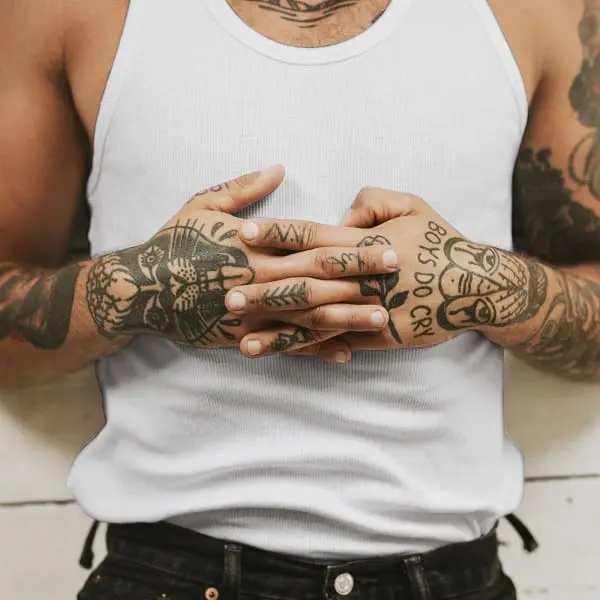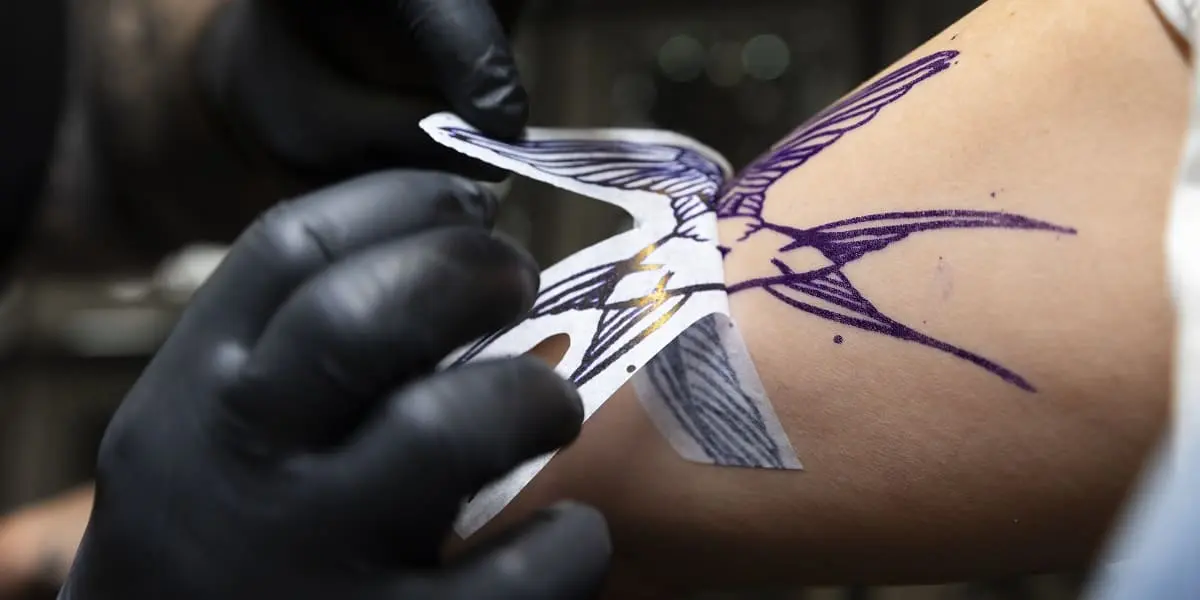Content
The old school style, or traditional American tattoo, is distinguished by its pronounced contours, bright colors and clean patterns. It has its origins in the 1930s in the United States, emerging from the culture of sailors who, during their stopovers in various ports around the world, embellished their skin with these unique works of art. This type of tattoo is not only an art form, it also conveys the history, values and symbols of America.
This text takes you on a journey to discover the roots and evolution of traditional american tattoo. You’ll explore its specificities, the depth of its symbolism and its messages.
This journey through time will also reveal the names of the icons who have left their mark on this field, and how the old school style has influenced other movements in tattoo art, such as neo-traditional or Polynesian Maori tattooing.
Whether you’re an aficionado of the old school style or simply curious to know more about this iconic art, you’ve come to the right place.

Definition: What is traditional american tatoo?
The old school tattoo is a tradition rooted in American maritime and military culture. Its evolution is the result of travel and exchanges between sailors and soldiers, who adopted the tattoo as a means of protection, remembrance and identity.
The influence of sailors and soldiers
In 1846, the very first tattoo parlor opened in New York, founded by war veteran Martin Hildebrandt.
The style quickly became popular with sailors, who adorned their skin with maritime motifs such as anchors, ships, mermaids or starfish, charged with symbolic or superstitious meanings, supposedly offering protection and good luck, or symbolizing loyalty.
This fashion has become an essential ritual for sailors the world over, enabling them to share a common visual language.
Who were the pioneers of traditional american tattoos?
Between the 1930s and 1940s, traditional american tattoos underwent an artistic revolution with the emergence of talented tattoo artists like Sailor Jerry, who drew inspiration from Japanese art to renew the design palette with more elaborate and vibrant creations.
Names like Bert Grimm, Cap Coleman and Paul Rogers were also instrumental in popularizing and modernizing the practice, introducing electric machines, improving ink quality and using flash.
The thematic repertoire expanded to include pin-ups, animals and flowers, as well as patriotic and religious symbols.
Traditional american tattoos thus became an art form representative of America’s history, culture and values.
What are the characteristics of traditional american tattoos?
Renowned for its striking, uncluttered aesthetic, traditional american tattoo is distinguished by its distinctive elements: a specific range of colors, iconic motifs, techniques and line styles. These elements give this type of tattoo its timeless allure and striking expressiveness.
Color palette and iconic motifs
Traditional american tattoo is characterized by a restricted color palette, with a strong emphasis on bright, primary tones such as yellow, red, green and black. This selection creates a striking visual contrast.
As for the motifs, they are strongly inspired by the maritime and military worlds, with elements such as anchors, sailing ships, mermaids, starfish, pin-ups, flora and fauna, patriotic emblems and religious icons. These images often carry a profound meaning, reflecting the personal values, beliefs and experiences of the people tattooed.
Specific techniques and line styles
Traditional american tattoo is distinguished by its clean, thick, pronounced lines, which clearly define the contours of the designs, offering a bold yet simplified rendering. The complexity of detail is kept to a minimum, favoring direct interpretation and unequivocal visual impact.
This style is also characterized by the use of subtle shading, mainly in black or red, which enriches the drawing with an extra dimension without weighing down the visual.

Symbols and meanings of traditional american tattoos
The traditional American tattoo, more than just a visual art form, represents a rich symbolic language. It reflects the wearer’s beliefs, values and experiences. As each motif carries a profound meaning, the interpretation of these symbols varies according to context.
This section explores the symbolism of animals and popular objects, as well as the enduring themes of traditional american tattoos, highlighting their evolution throughout history.
Animals and objects
Animals and objects, frequently represented in traditional american tattoos, often have their origins in maritime or military contexts. Here’s an overview of their symbolism:
- Anchor: a symbol of stability, security and loyalty, sometimes signifying the crossing of the Atlantic or membership of the U.S. Navy.
- Boat: represents travel, adventure and the quest for freedom. It can also refer to the sailor’s profession or nostalgia for home.
- Siren: evokes seduction, beauty and mystery, but can also symbolize danger or temptation.
- Compass rose: a symbol of orientation, hope and luck, it can also represent protection, faith or destiny.
- Pin-up: embodies desire, sensuality and charm, and can pay tribute to a love interest, idol or celebrity.
- Animals: reflect an individual’s personality, character or totem, and symbolize strength, courage or wisdom.
- Flowers: represent beauty, life and love, but can also symbolize mourning, memory or respect.
- Patriotic symbol: expresses pride, patriotism or service, and can also represent loyalty, sacrifice or bravery.
- Religious figure: expresses faith, devotion or grace, and can also be a symbol of protection, redemption or miracle.
Recurring themes and their evolution
Traditional american tattoo embraces themes intimately linked to American history, culture and values, themes that have been transformed by social, political and artistic change.
Here are a few notable examples of this thematic evolution:
- Sea: main characteristic, source of inspiration drawn from maritime life, evoking travel and adventure, but also nostalgia and romanticism.
- War: central theme, reflecting the commitment and bravery of combatants, illustrating violence but also honor and conquest.
- America: inspiring national identity and symbols, representing freedom and progress, while addressing themes of conflict and diversity.
- Japan: a powerful influence, bringing complexity, color and finesse, and introducing mystery, exoticism and spirituality.
- Neo-traditional: a modern evolution that revisits classic motifs, incorporating more detail and modernity, while retaining the original spirit.
Traditional american tattoo is deeply rooted in the maritime and military culture of the United States, while being influenced by Japanese art and various tattoo styles.
This style is distinguished by its motifs, colors and symbols, which embody the beliefs, values and experiences of the tattooed, touching on various themes such as the sea, war, as well as American and Japanese cultures.
- American traditional — Wikipédia – wikipedia.org
